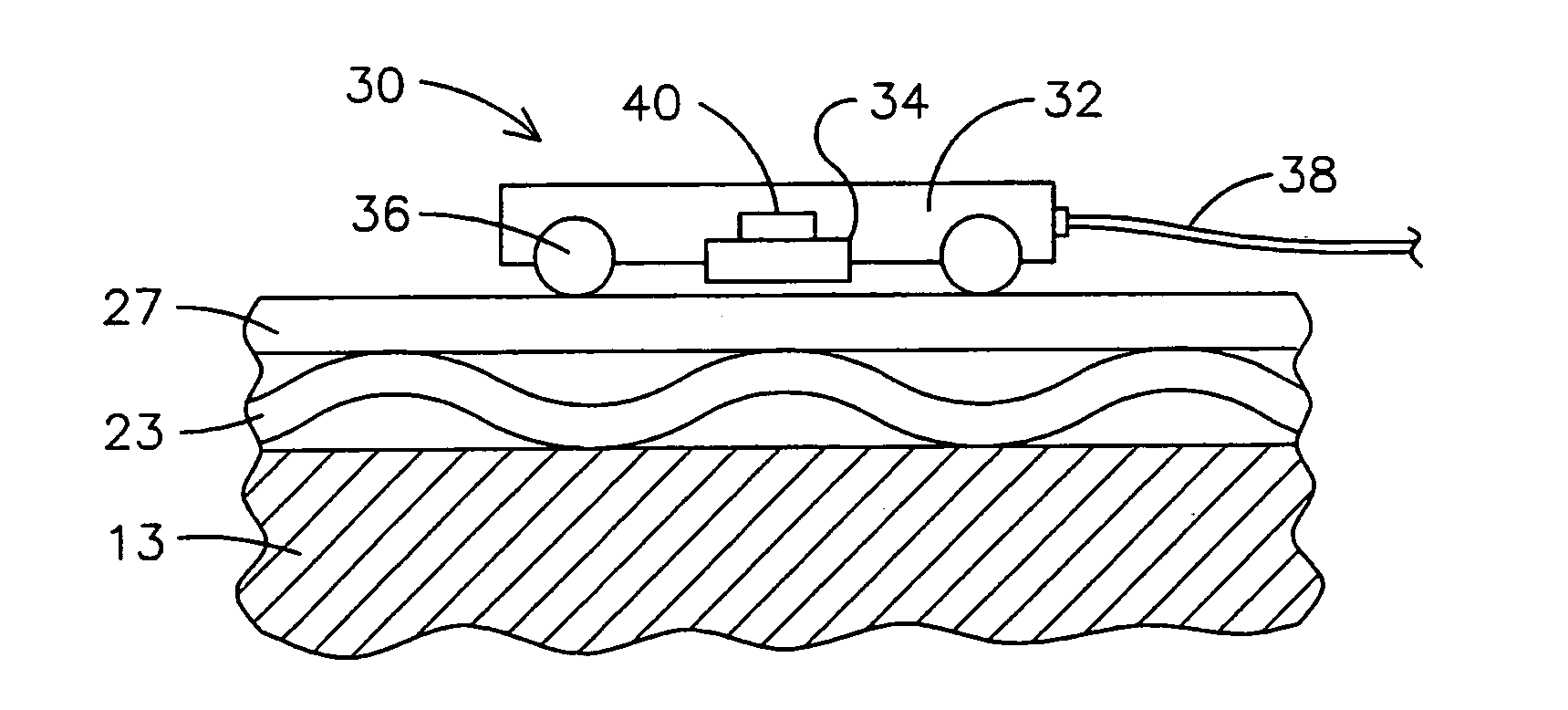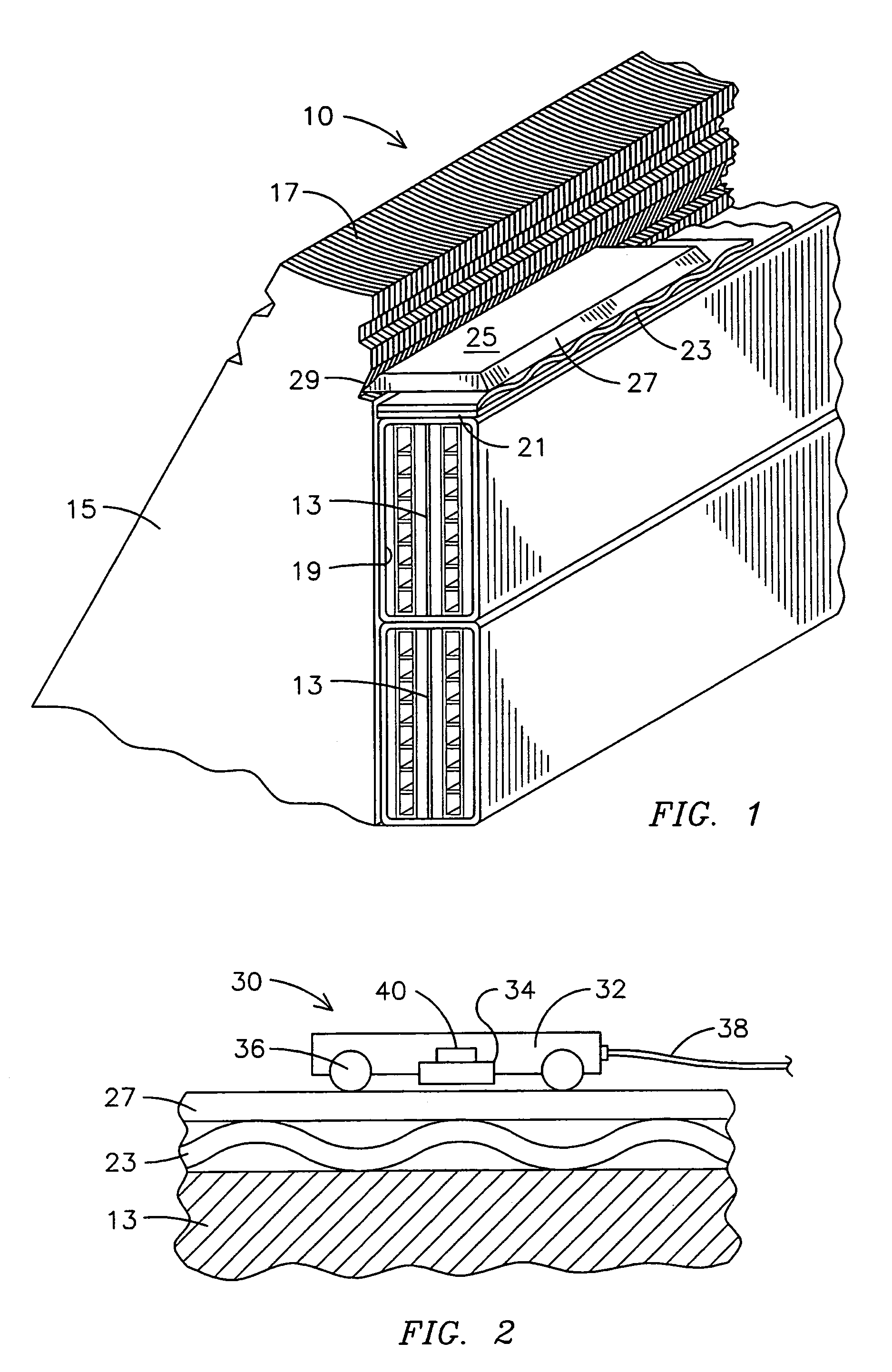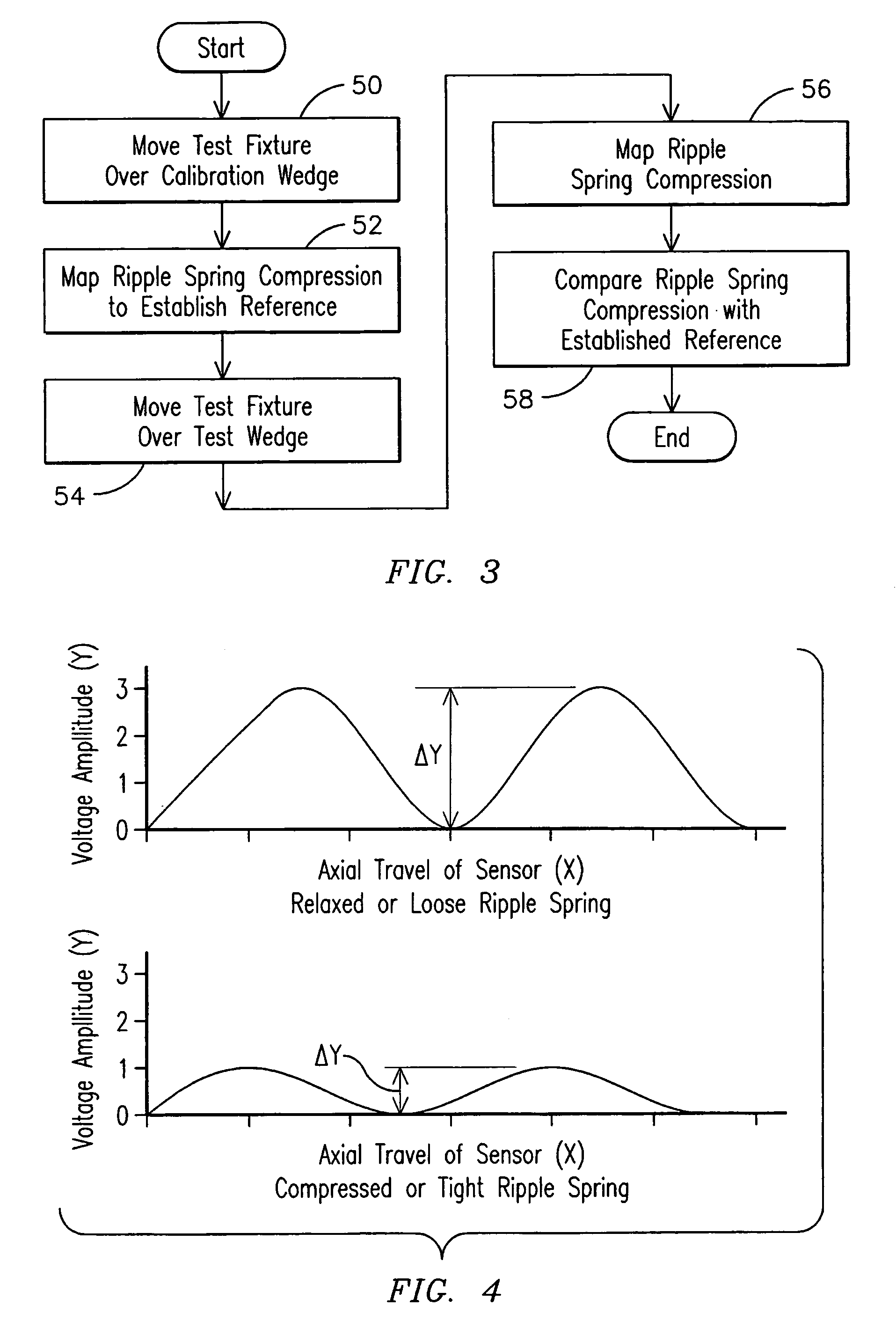Method and system for ripple-spring compression assessment
a ripple spring and compression technology, applied in the field of dynamoelectric machines, can solve problems such as inspections, and loosening of statator wedges, and achieve the effects of avoiding failure of electric generators, and avoiding failure of dynamoelectric generators
- Summary
- Abstract
- Description
- Claims
- Application Information
AI Technical Summary
Benefits of technology
Problems solved by technology
Method used
Image
Examples
Embodiment Construction
[0018]FIG. 1 illustrates an example of a stator 10 to which methods and systems of the present invention may be applied. The stator 10 includes stator teeth 15; which are formed from multiple, stacked laminations 17. The stator 10 also includes stator slots 19 in which stator coils 13 may be stacked. The stator coils 13 are retained in the slots 19 by shims 21, ripple springs 23, and stator wedges 25 having beveled edges 27 for engaging correspondingly shaped grooves 29 in the sidewalls of the stator teeth 15. The ripple springs 23 are compressed between the stator wedges 25 and shims 21 to generate a force that firmly holds the stator coils 13 in place. Over time, the ripple springs 23 may lose their resiliency so that the stator wedges 25 become loose. This can permit the stator coils 13 to vibrate, which can result in damage to the stator 10 and eventual failure of the electrical generator.
[0019]FIG. 2 illustrates a compression-assessment tool 30 for assessing the tightness of ri...
PUM
| Property | Measurement | Unit |
|---|---|---|
| length | aaaaa | aaaaa |
| force | aaaaa | aaaaa |
| electrically wound | aaaaa | aaaaa |
Abstract
Description
Claims
Application Information
 Login to View More
Login to View More - R&D
- Intellectual Property
- Life Sciences
- Materials
- Tech Scout
- Unparalleled Data Quality
- Higher Quality Content
- 60% Fewer Hallucinations
Browse by: Latest US Patents, China's latest patents, Technical Efficacy Thesaurus, Application Domain, Technology Topic, Popular Technical Reports.
© 2025 PatSnap. All rights reserved.Legal|Privacy policy|Modern Slavery Act Transparency Statement|Sitemap|About US| Contact US: help@patsnap.com



